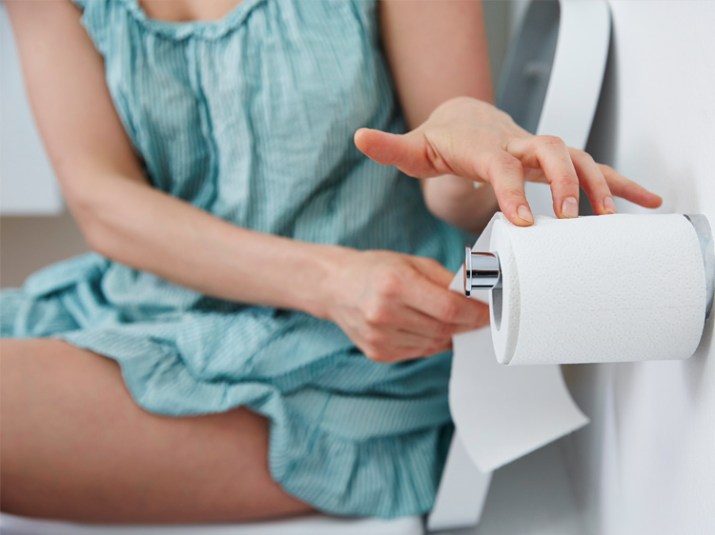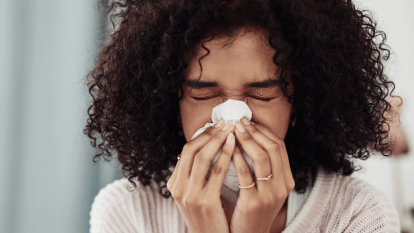6 Yeast Infection Myths That Need to Be Addressed Right Now

With so much misinformation on the internet today, it’s not surprising that there are many yeast infection myths making the rounds. This is disappointing, especially because taking care of your health and well-being is so important — and the results can be disastrous if you do so the wrong way. That’s why we rounded up some of the most common yeast infection myths out there. Now, it’s time to bust these myths — with the truth.
1. Yeast infections are caused by sex.
This is probably one of the most common myths about yeast infections, and it’s no surprise why. After all, they can be shared and spread by sexual partners, so it’s natural to assume that’s how they begin. But yeast infections are not true STDs. Instead, yeast infections are actually a result of the body producing too much of a fungus known as Candida, which is a type of yeast. Though this overgrowth can be caused by a variety of factors — including warmth and moisture in the vaginal area, uncontrolled diabetes, and stress — sex alone is not how it originates.
2. Only women get yeast infections.
As you might expect, it’s far more likely that a woman will get a yeast infection than a man. After all, a woman’s vagina is one of the most common places on the body where an infection of this nature happens. That said, it’s possible for men to get them as well. The tricky thing about male yeast infections is that they may not show as many symptoms as a woman does — or even any symptoms at all. So if you have a yeast infection, your partner should be treated for one, too.
3. Yeast infections only happen in the vagina.
Actually, yeast infections can happen in a wide variety of places both inside and on the body, including the mouth, esophagus, skin, and bloodstream. If you notice red, cracked areas or white patches inside your mouth, you may have an oral yeast infection of some sort. And if you spot red patches that are moist and raw anywhere on your skin, that might be a yeast infection as well. (Heck, it’s even possible to get yeast infections on your breasts.) Any unusual symptoms like these are a big sign that it’s time to see the doctor.
4. Cranberry juice cures a yeast infection.
Using cranberry juice to cure yeast infections is a tale as old as time. It’s too bad that tale isn’t true! While there’s certainly nothing wrong with taking a sip of cranberry juice every now and then, don’t sit around and expect it to give you relief from the funky fungus. (Psst: Cranberry juice doesn’t work for UTIs, either.) Proper yeast infection treatment depends on your specific case. Over-the-counter antifungal vaginal suppositories and creams may do the trick for some yeast infections. Other cases might require a doctor’s prescription for the antifungal medication fluconazole, according to Mayo Clinic. Always check with your doctor if you’re not sure which course to take.
5. Douching can help “clean up” a yeast infection.
Not only does douching not help your downstairs region, it may actually hurt it even more. Lauren Streicher, MD, an associate clinical professor of obstetrics and gynecology at Northwestern University, told us that all women who douche should stop immediately. Even though douching is portrayed as a practice that can help “clean” the vagina, it can actually put you more at risk for an infection, as well as inflammation and pelvic inflammatory disease. That’s because douching can disrupt the balance of healthy bacteria in the vagina and even cause an overgrowth of harmful bacteria. No one wants that!
6. Discomfort “down there”? It’s definitely yeast.
Dr. Streicher explains that so-called recurring yeast infections might not actually be yeast infections at all. For example, an irritating sensation down there coupled with a strong odor and watery discharge might in fact be bacterial vaginosis (a totally unrelated bacterial condition). Another darn uncomfortable possibility is that your yeast infection might actually be lactobacillus overgrowth syndrome (an overgrowth of good bacteria). If you’ve tried every yeast infection remedy in the book and it’s not going away, then it’s time to see the doctor.
You deserve to be healthy everywhere on your body!
More From FIRST
Yes, Your Private Parts Really Can Get ‘Depressed’
Exhausted All the Time? You Could Have a Silent UTI
4 Sneaky Things That Can Throw Off Your Vaginal pH — And How to Address Them













